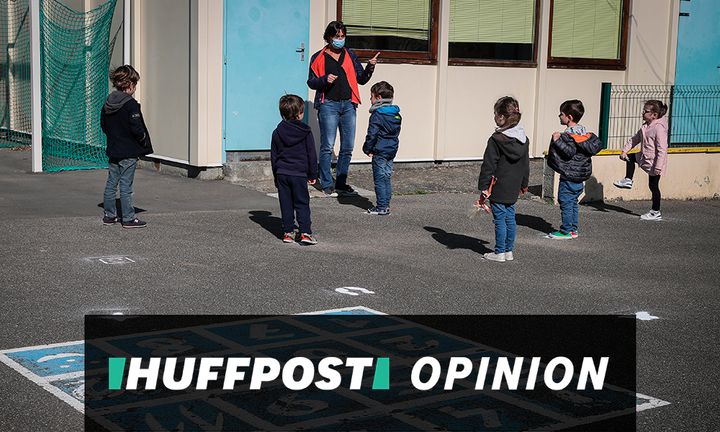
Get the latest on coronavirus. Sign up to the Daily Brief for news, explainers, how-tos, opinion and more.
Every headteacher in England is deeply concerned by the government guidance for a phased a return at the start of June and the “ambition” for all primaries to return just two weeks later. As a headteacher of a large primary with nearly 350 children and 60 staff, I am responsible for the safety of thousands of people from families in our community.
Since the very beginning of the coronavirus pandemic, schools have only received information via the national announcements at the same time as the general public. Last Sunday’s update was no different and primary school guidance was only released late on Thursday. That essentially gives schools six working days – excluding weekends, the bank holiday and the May half term. Which, incidentally, we will still be open for, as has been the case since the start of the pandemic. The conflicting guidance makes it exceptionally challenging to plan and prepare for further change adequately and in a timely manner.
We have remained partially open since the beginning to support children of key workers and vulnerable families, and as a hub school for the wider community, we are available to care for babies up to 12 year olds – seven days a week – and this has included the Easter holiday and all bank holidays. My team has gone above and beyond to care for the families in our community, helping to fight this virus and save lives. I think that makes my team and everyone within the education sector “heroes”. We do not, however, wish to be heroes by being the only sector in the UK to be asked to accept that social distancing isn’t really possible, to work in groups of 16 with no social distancing, for children that could still be safe at home and have next to no PPE equipment.
“I will not open my school to more children until more information and support has been provided and I have absolute confidence to do so.”
We are all desperate to see a return to some form of normality, and my team and I, even with daily communication and online learning, miss the children greatly. The lack of clarity from the government and conflicting guidance to what general society is being asked to do, however, is very unsettling and we need significantly more information and support to ensure the safety of the children, staff and families. I will not open my school to more children until this has been provided and I have absolute confidence to do so.
The proposal to bring back all four to six-year-olds as a priority is concerning in regards to maintaining effective social distancing. In fact, a Twitter poll I conducted with over 3,000 votes showed 98% believe it is not possible with this age group. For example, a four-year-old will often need an adult to hold their hand, or reassure them with a cuddle, within seconds of a normal school day. They will want to learn through play within close proximity of their peers whilst sharing the same resources. The government guidance states: “We know that, unlike older children and adults, early years and primary age children cannot be expected to remain two metres apart from each other and staff. In deciding to bring more children back to early years and schools, we are taking this into account.”
Despite conceding, therefore, that social distancing isn’t possible and staff should work with 15 children and other adults, the guidance then goes on to state that wearing face coverings isn’t recommended and only allows for use of PPE, when symptoms are displayed or administering first aid or changing nappies for example. Unions have questioned the guidance, the scientific evidence, and if additional funding would be provided for cleaning and PPE. This has been met with a wave of scandalous headlines in some press and a dangerous, lazy-teacher narrative.
The strategy for return has to be carefully planned and implemented, guided by robust scientific evidence, particularly on infection, viral overload and transmission rates for different age groups. I also strongly believe that if we are to have confidence that this is safe, surely the same social distancing and PPE guidance should be more closely mirrored in wider society? How am I to have confidence in the government advice to tell hundreds of families that it is safe, when schools in Scotland, Wales and Northern Ireland are being informed that it is not safe until at least September. Staff can work in close proximity to large groups of children and adults, with next to no safety equipment, but cannot visit family or friends.
Prioritising a return of Year 6 children, who can be mindful of social distancing and are more independent, is far more achievable and would seem a safer strategy. However, it could easily have a significant effect on children’s mental health when they are not allowed to get too close to their friends and they are not allowed to see friends in other groups or classes.
Schools are supposed to be a haven of safety, friendship, fun and exciting learning. Social distancing enforcement does not allow that to be possible.
Closing our school at short notice was a challenge and reopening school (whenever/however this happens) will be no less of one. However, I know my team will be working tirelessly to ensure that the health, safety and wellbeing of the children is the central focus of what we do. Does that make us heroes? I really don’t know, but as long as I can ensure everyone’s safety, I really don’t think it matters.
Chris Parkhouse is headteacher at Grove Road CP School, Harrogate, North Yorkshire.
